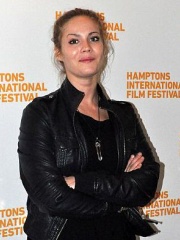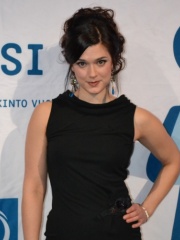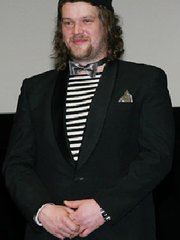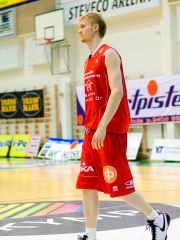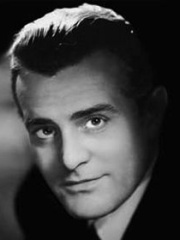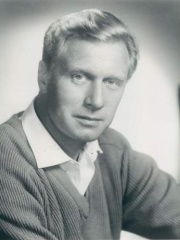
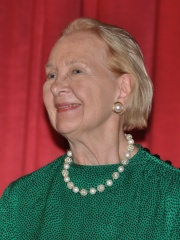
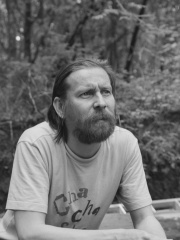
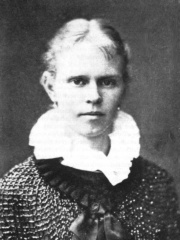
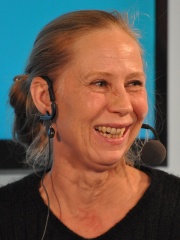
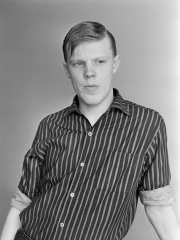
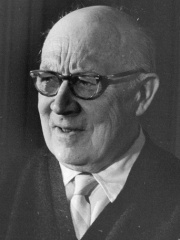
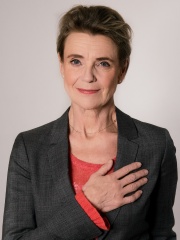
The Most Famous
ACTORS from Finland
Top 10
The following people are considered by Pantheon to be the top 10 most legendary Finnish Actors of all time. This list of famous Finnish Actors is sorted by HPI (Historical Popularity Index), a metric that aggregates information on a biography's online popularity. Visit the rankings page to view the entire list of Finnish Actors.

1. George Gaynes (1917 - 2016)
With an HPI of 68.85, George Gaynes is the most famous Finnish Actor. His biography has been translated into 37 different languages on wikipedia.
George Gaynes (born George Jongejans; May 16, 1917 – February 15, 2016) was a Dutch-American singer, actor, and voice artist. Born to a Dutch father and a Russian mother in the Grand Duchy of Finland of the Russian Empire, he served in the Royal Netherlands Navy during World War II, and subsequently emigrated to the United States, where he became a citizen and began his acting career on Broadway. Gaynes' most recognized roles in cinema were that of Commandant Eric Lassard in the Police Academy series and as John Van Horn in the 1982 comedy film Tootsie. He appeared as the curmudgeonly but lovable foster parent Henry Warnimont on the NBC series Punky Brewster; as high-powered theatrical producer Arthur Feldman on The Days and Nights of Molly Dodd; as Senator Strobe Smithers in the hit TV show Hearts Afire; and as Frank Smith, the mob boss brought down by Luke Spencer (Anthony Geary) and Laura Spencer (Genie Francis) on the soap opera General Hospital.

2. Taina Elg (1930 - 2025)
With an HPI of 59.97, Taina Elg is the 2nd most famous Finnish Actor. Her biography has been translated into 24 different languages.
Taina Elisabeth Elg (9 March 1930 – 15 May 2025) was a Finnish and American actress and dancer. She appeared on stage, television and in film.

3. Matti Pellonpää (1951 - 1995)
With an HPI of 59.45, Matti Pellonpää is the 3rd most famous Finnish Actor. His biography has been translated into 17 different languages.
Matti Pellonpää (28 March 1951 – 13 July 1995) was a Finnish actor and a musician. He rose to international fame with his roles in both Aki Kaurismäki's and Mika Kaurismäki's films; particularly being a regular in Aki's films, appearing in 18 of them.

4. Siri von Essen (1850 - 1912)
With an HPI of 58.95, Siri von Essen is the 4th most famous Finnish Actor. Her biography has been translated into 15 different languages.
Sigrid "Siri" Sofia Matilda Elisabet von Essen (17 August 1850 – 21 April 1912) was a Swedish-speaking Finnish noblewoman and actress. Her acting career spanned about 15 years, during which time she appeared in a number of plays that her then husband the Swedish dramatist and writer August Strindberg wrote specifically for her.
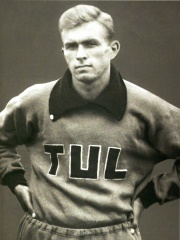
5. Tapio Rautavaara (1915 - 1979)
With an HPI of 58.34, Tapio Rautavaara is the 5th most famous Finnish Actor. His biography has been translated into 28 different languages.
Kaj Tapio Rautavaara (8 March 1915 – 25 September 1979) was a Finnish singer (bass-baritone), athlete and film actor.

6. Kati Outinen (b. 1961)
With an HPI of 57.97, Kati Outinen is the 6th most famous Finnish Actor. Her biography has been translated into 22 different languages.
Anna Katriina "Kati" Outinen (born 17 August 1961) is a Finnish actress who has often played leading female roles in Aki Kaurismäki's films. She is known for her minimalist acting style and her portrayal of resilient, working-class characters.

7. Vesa-Matti Loiri (1945 - 2022)
With an HPI of 57.43, Vesa-Matti Loiri is the 7th most famous Finnish Actor. His biography has been translated into 22 different languages.
Vesa-Matti "Vesku" Loiri (4 January 1945 – 10 August 2022) was a Finnish actor, musician and comedian, best known for his role as Uuno Turhapuro, whom he portrayed in a total of 20 movies between the years 1973 and 2004. Loiri made a strong impression early in his career with the role of Jake in the drama film The Boys. He later acted in notable films such as Rakastunut rampa, Pedon merkki, and The Howling Miller, as well as in the television series Rauta-aika. In the latter part of his career, Loiri appeared in several dramedies, including Tie pohjoiseen (Road North). Loiri's comedic career began in collaboration with Spede Pasanen during the late 1960s. Together, they created the character Uuno Turhapuro, a slovenly antihero who entertained audiences and frustrated critics through his misadventures. Other comedic characters Loiri portrayed included Nasse-setä, Jean-Pierre Kusela, and Tyyne, all of which were featured in television sketch shows in the 1980s and later expanded into films and music albums. Loiri, Pasanen, and Simo Salminen formed the popular comedy trio Spede, Vesku ja Simo. In addition to his comedic roles, Loiri delivered critically acclaimed performances in theater, such as his portrayal of Kosola in the Ylioppilasteatteri production of Lapualaisooppera and Tuomas in the Turku City Theatre adaptation of Seven Brothers. Loiri was also known for immersing himself deeply in his roles, sometimes to the detriment of his mental health. This was particularly evident with his roles in The Boys and Pahat pojat (Bad Boys), where he portrayed intense and troubled characters. As a singer, Loiri gained acclaim for his interpretations of Eino Leino's poetry, alongside recording Finnish pop songs, including works by Reino Helismaa and Juha Vainio. Between 2006 and 2008, he released a trilogy of acoustic albums, Ivalo, Inari, and Kasari, which featured Finnish pop and rock classics. According to Yle News, "Loiri was one of Finland's most beloved cultural figures over six decades, playing comic and tragic roles on screen and stage, alongside a musical career." Loiri died of cancer on 10 August 2022.

8. Gustaf Molander (1888 - 1973)
With an HPI of 57.37, Gustaf Molander is the 8th most famous Finnish Actor. His biography has been translated into 15 different languages.
Gustaf Harald August Molander (18 November 1888 – 19 June 1973) was a Swedish actor and film director. His parents were director Harald Molander, Sr. (1858–1900) and singer and actress Lydia Molander, née Wessler, and his brother was the director Olof Molander (1892–1966). He was the father of director and producer Harald Molander from his first marriage, from 1910-1918, with actress Karin Molander and father to actor Jan Molander from his second marriage to Elsa Fahlberg (1892–1977). Gustaf Molander was born in Helsingfors (Helsinki) in the Grand Duchy of Finland (in the Russian Empire), where his father was working at the Swedish Theatre. He studied in the school of the Royal Dramatic Theatre in Stockholm 1907–1909, acted at the Swedish Theatre in Helsingfors 1909–1913, and then at the Royal Dramatic Theatre from 1913 to 1926. The last years there he headed the school; his students included Greta Garbo. Molander wrote several screenplays for Victor Sjöström and Mauritz Stiller, and was helped by the latter to get employment as a director for Svensk Filmindustri, where he worked 1923–1956. All in all, he directed 62 films. He often worked with Gösta Ekman, and his films include Intermezzo (1936), which became Ingrid Bergman's breakthrough and paved her way to America, where she starred in the 1939 Hollywood remake of the film. In 1943 he directed Ordet, the first film version of the play of the same name written by the Protestant pastor Kaj Munk, not to be confused with the second and more famous version of the film brought to the big screen by Carl Theodor Dreyer. The Danish master's film was shot twelve years later and won the prestigious Golden Lion at the Venice International Film Festival. In 1948 Molander made what should have been his last film, Eva, but almost twenty years later, in 1967, he agreed to participate as a director of an episode in the collective film Stimulantia only to return to work with Ingrid Bergman 30 years later.

9. Stina Ekblad (b. 1954)
With an HPI of 56.72, Stina Ekblad is the 9th most famous Finnish Actor. Her biography has been translated into 21 different languages.
Stina Åsa Maria Ekblad (born 26 February 1954) is a Swedish-speaking Finnish actress. Living in Stockholm, she has appeared mostly in Swedish productions. She received a Guldbagge Award for Best Actress in 1987 for her performances in Amorosa and Ormens väg på hälleberget (The Serpent's Way) and was nominated again in 1996 for her performance in Pensionat Oskar. Stina Åsa Maria Ekblad was born on 26 February 1954 in Solf in Ostrobothnia. Her parents are Karl Erik Ekblad and Gertrud Viola Boholm. She was educated at the acting school of the Odense Theatre and has worked as an actress in Odense. In 1977, she published a book of poems titled Dikter. In 2006, she received the Thalia Prize from Svenska Dagbladet for her leading role in Phèdre. She and her partner Jan Dolata have a son.
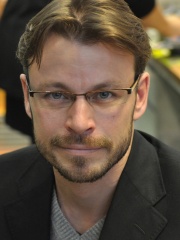
10. Peter Franzén (b. 1971)
With an HPI of 56.03, Peter Franzén is the 10th most famous Finnish Actor. His biography has been translated into 19 different languages.
Peter Vilhelm Franzén (born 14 August 1971) is a Finnish actor, author, screenwriter, and director. He is best known for his role as King Harald Finehair in Vikings (2016–2020).
People
Pantheon has 23 people classified as Finnish actors born between 1850 and 1986. Of these 23, 14 (60.87%) of them are still alive today. The most famous living Finnish actors include Kati Outinen, Stina Ekblad, and Peter Franzén. The most famous deceased Finnish actors include George Gaynes, Taina Elg, and Matti Pellonpää. As of April 2024, 4 new Finnish actors have been added to Pantheon including Ville Virtanen, Ville Haapasalo, and Minna Aaltonen.
Living Finnish Actors
Go to all RankingsKati Outinen
1961 - Present
HPI: 57.97
Stina Ekblad
1954 - Present
HPI: 56.72
Peter Franzén
1971 - Present
HPI: 56.03
Ville Virtanen
1961 - Present
HPI: 51.22
Jasper Pääkkönen
1980 - Present
HPI: 50.78
Pihla Viitala
1982 - Present
HPI: 50.05
Krista Kosonen
1983 - Present
HPI: 50.04
Jouko Ahola
1970 - Present
HPI: 48.67
Laura Birn
1981 - Present
HPI: 48.57
Ville Haapasalo
1972 - Present
HPI: 46.61
Joonas Suotamo
1986 - Present
HPI: 45.12
Mikko Leppilampi
1978 - Present
HPI: 45.11
Deceased Finnish Actors
Go to all RankingsGeorge Gaynes
1917 - 2016
HPI: 68.85
Taina Elg
1930 - 2025
HPI: 59.97
Matti Pellonpää
1951 - 1995
HPI: 59.45
Siri von Essen
1850 - 1912
HPI: 58.95
Tapio Rautavaara
1915 - 1979
HPI: 58.34
Vesa-Matti Loiri
1945 - 2022
HPI: 57.43
Gustaf Molander
1888 - 1973
HPI: 57.37
Tauno Palo
1908 - 1982
HPI: 54.09
Minna Aaltonen
1966 - 2021
HPI: 45.76
Newly Added Finnish Actors (2025)
Go to all RankingsVille Virtanen
1961 - Present
HPI: 51.22
Ville Haapasalo
1972 - Present
HPI: 46.61
Minna Aaltonen
1966 - 2021
HPI: 45.76
Regina Lund
1967 - Present
HPI: 43.89
Overlapping Lives
Which Actors were alive at the same time? This visualization shows the lifespans of the 8 most globally memorable Actors since 1700.



